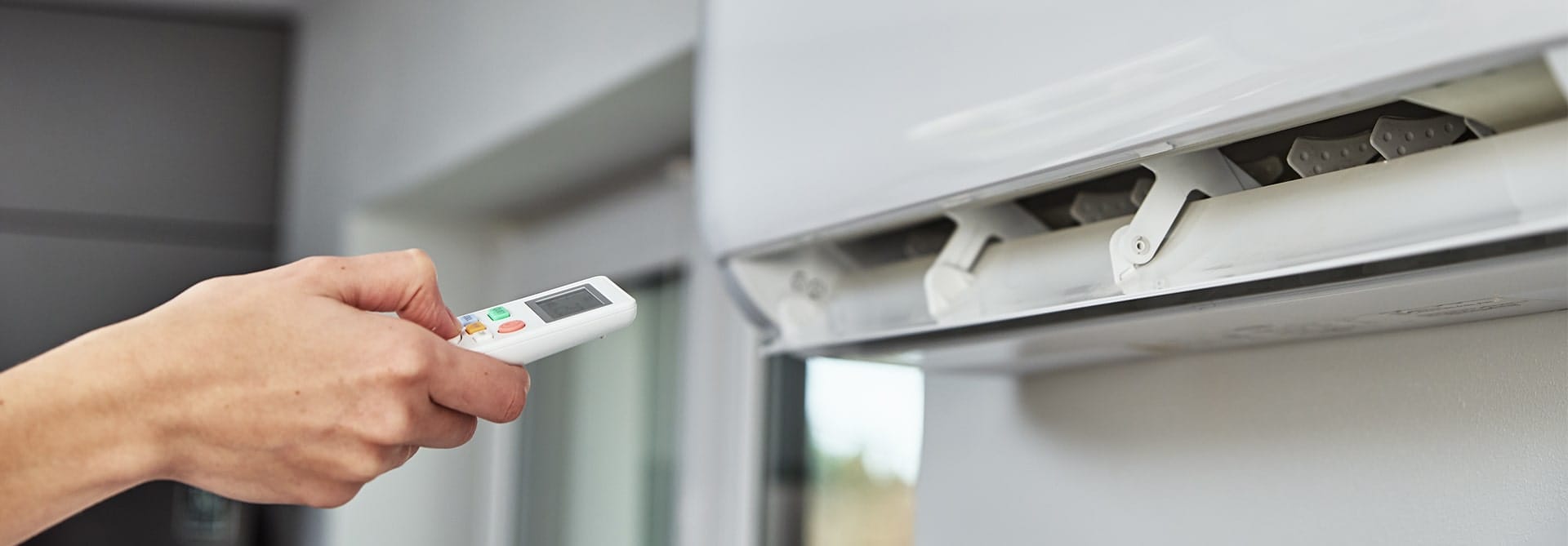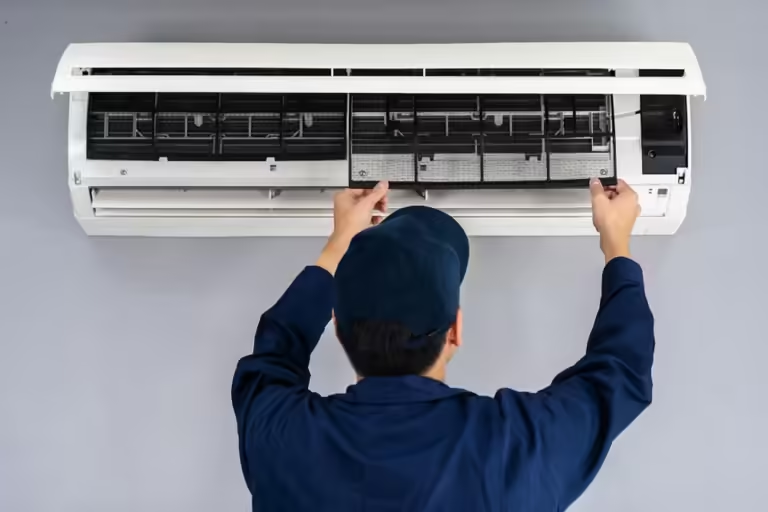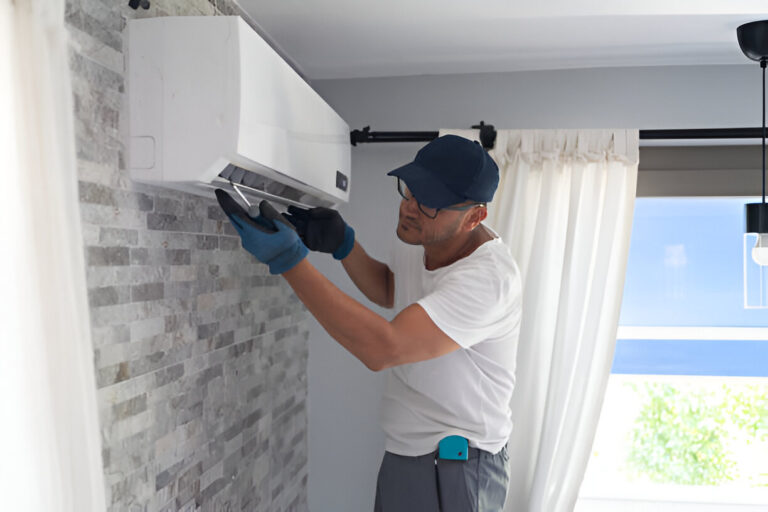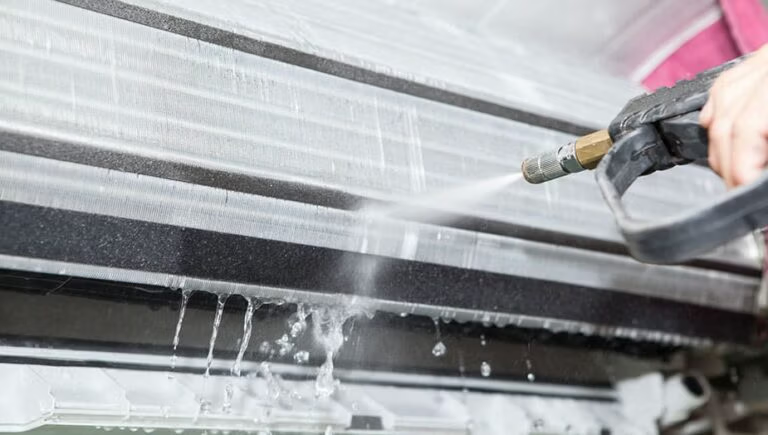Mini-split systems refer to aircon with a split indoor and outdoor unit connected by a series of wires and refrigeration lines for exhaust and coolant. These units are becoming increasingly popular for their ease of installation and flexibility in cooling a room or space.
However, when it comes to choosing between a ceiling cassette and a wall-mounted aircon system (the two primary mini-split models), the decision can be challenging. Both options have their advantages and disadvantages, and it is essential to understand their features before making a choice.
To help you make an informed decision on this matter, let us examine both units and discuss their pros and cons. This way, you can have a clearer idea of which one may be the best fit for your needs.
What are ceiling cassette AC systems?
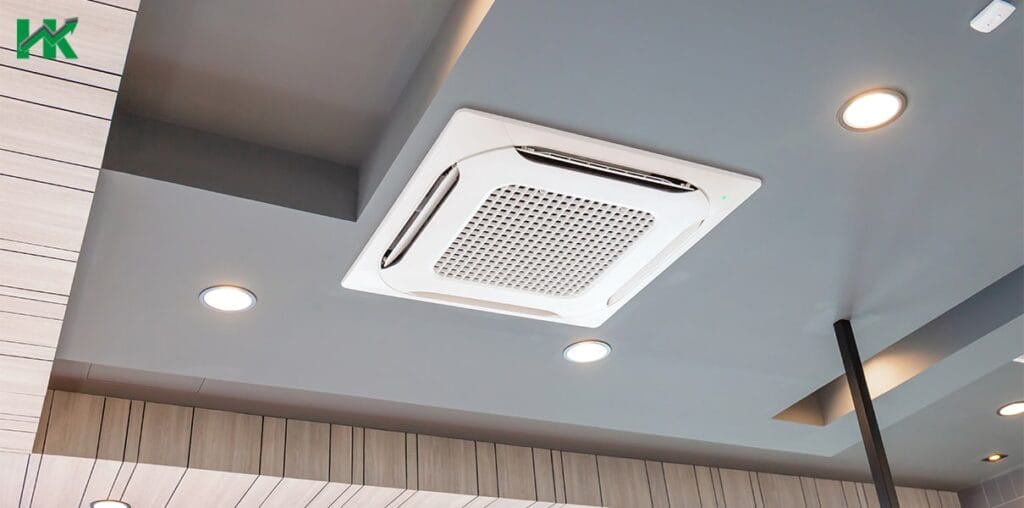
Ceiling cassette aircon systems, also known as recessed ceiling or concealed duct units, consist of a small indoor unit mounted in the ceiling and connected to an outdoor unit outside the building.
This is often done to optimise space while maintaining a cooling system that can cool multiple zones simultaneously.
Advantages of a ceiling cassette aircon
Space saving
Ceiling cassette units clear the floor and wall space for other uses since their indoor units are concealed within the ceiling. This makes them ideal for compact spaces or areas where aesthetics are essential. Their flexible and versatile designs also ensure minimal clashes with your interior aesthetics.
Stronger cooling power
Because ceiling cassette aircon systems utilise ductwork, the cool air is distributed throughout the room evenly, ensuring consistent cooling and contributing to their overall cooling capacity. Therefore, they can offer cooling throughout large spaces or multiple rooms at a time, making them suitable for offices or commercial spaces.
Energy saving
Due to their capacity to distribute cool air evenly throughout a large area, ceiling cassettes naturally consume less power and are more energy-saving. So you will notice yourself saving more on your electricity bills in the long run compared to traditional HVAC systems.
Disadvantages of a ceiling cassette aircon
More expensive to install
Since ceiling cassettes require ductwork to be installed within the ceiling, the aircon installation process can be more time-consuming and expensive.
More challenging to maintain
However, the installation cost is just the tip of the iceberg. Due to the more complex nature of servicing the aircon, DIY maintenance can be challenging unless you possess the required technical expertise. Instead, you will have to contact a licensed aircon contractor to maintain your ceiling cassettes regularly, increasing your maintenance expenses.
What are wall-mounted AC systems?
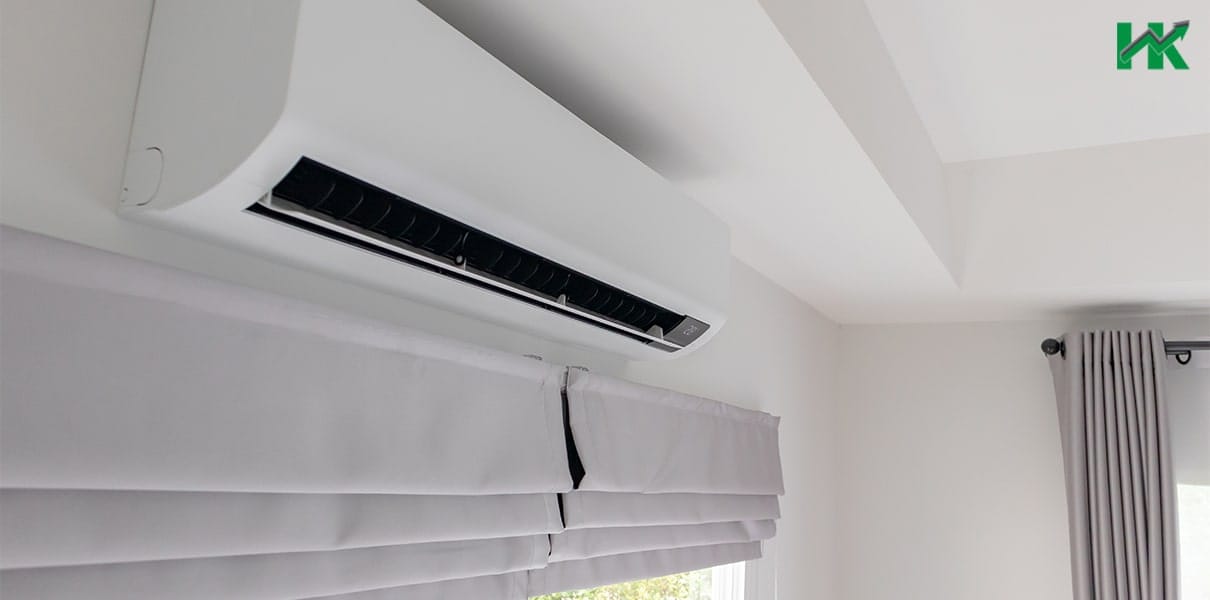
You would probably be more familiar with wall-mounted aircon, as they are common in many homes and offices. This system, also known as high-wall or ductless units, consists of a small indoor unit mounted on a wall and connected to an outdoor unit outside the building and uses refrigerant lines to circulate cool air throughout the room. They are often used in small residential spaces or rooms where a central air conditioning system is not required.
Advantages of a ceiling cassette aircon
More affordable installation costs
Wall-mounted aircon is usually more affordable to install than ceiling cassette models, as this system does not require any ductwork. As a result, the aircon installation is quick and easy, which is ideal for home renovations or retrofits.
Easier to maintain
Naturally, the lack of ductwork means that maintenance and repairs are more straightforward and cost-effective. Specific aspects, like the filter, can be cleaned at home without the help of an aircon contractor. Although professional assistance is still needed from time to time to maintain the unit and prevent it from breaking down.
Energy saving
Like ceiling cassettes, wall-mounted aircon is known to be energy-saving, consuming less electricity than traditional HVAC systems. In particular, inverter units and smart models can help optimise the use of the system, resulting in cost-efficient energy consumption without compromising cooling efficiency.
Disadvantages of a ceiling cassette aircon
Temperature fluctuations
Ductless wall-mounted units can usually cool moderately-sized and large spaces efficiently as they have an average cooling capacity of 12,000 to 60,000 BTU. However, users may notice temperature fluctuating depending on the airflow of the unit.
More space required
As its name implies, a wall-mounted aircon requires adequate space on the wall to mount the mini-split system. The wall must also have an exterior side where the outdoor unit can be situated. As a result, more space is required to install the AC unit.
Furthermore, the installation process involves drilling through the wall to loop the wires and refrigerant lines. These elements, along with the visible indoor unit, make wall-mounted aircon less aesthetically pleasing than ceiling cassette systems.
As you can see, ceiling cassettes and wall-mounted units have their pros and cons. Nevertheless, both remain fantastic cooling systems that can efficiently cool large spaces and multiple rooms. At the end of the day, choosing the most suitable unit for your home or office comes down to your preferences and needs.
Regardless of your decision, your aircon system requires regular maintenance and cleaning to perform at its peak. Fortunately, you do not have to search far to identify a reliable and affordable aircon servicing company in Singapore. At Jetstyle Aircon, our technicians have years of experience in the industry. So you can rest assured that your AC unit is in safe hands. Do not hesitate to contact us today to enquire about our prices and services.
Learn More: What Can You Expect When You Hire An Aircon Servicing Company

